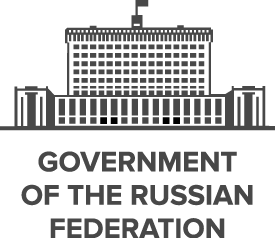Founded in the 12th century, the Principality of Muscovy was able to emerge from over 200 years of Mongol domination (13th-15th centuries) and to gradually conquer and absorb surrounding principalities. In the early 17th century, a new ROMANOV Dynasty continued this policy of expansion across Siberia to the Pacific. Under PETER I (ruled 1682-1725), hegemony was extended to the Baltic Sea and the country was renamed the Russian Empire. During the 19th century, more territorial acquisitions were made in Europe and Asia. Defeat in the Russo-Japanese War of 1904-05 contributed to the Revolution of 1905, which resulted in the formation of a parliament and other reforms. Repeated devastating defeats of the Russian army in World War I led to widespread rioting in the major cities of the Russian Empire and to the overthrow in 1917 of the imperial household. The communists under Vladimir LENIN seized power soon after and formed the USSR. The brutal rule of Iosif STALIN (1928-53) strengthened communist rule and Russian dominance of the Soviet Union at a cost of tens of millions of lives. After defeating Germany in World War II as part of an alliance with the US (1939-1945), the USSR expanded its territory and influence in Eastern Europe and emerged as a global power. The USSR was the principal adversary of the US during the Cold War (1947-1991). The Soviet economy and society stagnated in the decades following Stalin’s rule, until General Secretary Mikhail GORBACHEV (1985-91) introduced glasnost (openness) and perestroika (restructuring) in an attempt to modernize communism, but his initiatives inadvertently released forces that by December 1991 splintered the USSR into Russia and 14 other independent republics.
Following economic and political turmoil during President Boris YELTSIN's term (1991-99), Russia shifted toward a centralized authoritarian state under the leadership of President Vladimir PUTIN (2000-2008, 2012-present) in which the regime seeks to legitimize its rule through managed elections, populist appeals, a foreign policy focused on enhancing the country's geopolitical influence, and commodity-based economic growth. Russia faces a largely subdued rebel movement in Chechnya and some other surrounding regions, although violence still occurs throughout the North Caucasus.
Russia is a semi-presidential federation.
Members:
Resources
Displaying 256 - 260 of 1046Regional Law No. 1908-OD “On objects of cultural heritage”.
This Regional Law regulates relations in the sphere of conservation, protection and management of the objects of cultural heritage. Objects of cultural and historical heritage shall be considered areas and objects identified as such and recorded in the state register of the objects of cultural and historical heritage. Regional administration shall validate mapping of the boundaries of the areas of cultural heritage and regime of land tenure within them. Economic activities and movement of motor vehicles within areas of cultural heritage shall be restricted.
Regional Law No. 711-5-ZKO amending Regional Law No. 172-ZKO “On turnover of agricultural land”.
Article 11.2 shall be amended to add the following wording: “Regional Administration shall be responsible for drafting the list of agricultural land areas, the use of which for purposes other than agricultural shall be prohibited, insertion and cancellation from the list of agricultural land areas”.
Amends: Regional Law No. 172-ZKO “On turnover of agricultural land”. (2008-12-03)
Order No. P/117 of the Federal Land Cadastre Service validating land cadastre requirements.
This Order establishes the modalities of cadastral subdivision of the territory into cadastral districts and cadastral sections carried out by the territorial branches of the Federal Land Cadastre Service. The purpose of cadastral subdivision of the national territory shall be to assign cadastre numbers to the land plots determining location thereof within the boundaries of a cadastre section. Special attention in the process of elaboration of cadastre plan shall be paid to natural linear geographic objects such as natural landmarks and forest clearing.
Order No. 555 of the Ministry of Economic Development on cadastre registration of the objects of immovable property.
This Order establishes the modalities of state cadastre registration of the objects of immovable property by the Federal State Registration Cadastre and Cartographic Service. Application and the respective documentation shall be submitted to the cadastre registration authority in the electronic form and shall bear electronic digital signature. Survey map of land plot shall be submitted to the cadastre registration authority in the electronic form and shall bear electronic digital signature of the cadastre engineer in charge.
Regional Law No. 9-OZ amending Regional Law No. 31-OZ “On turnover of agricultural land”.
Article 5 shall be amended to add the following wording: “Minimum size of the consolidated land plot shall not be less than minimum size of land plots pertaining to public or municipal ownership and allotted for farming”.
Amends: Regional Law No. 31-OZ “On turnover of agricultural land”. (2014-04-01)


